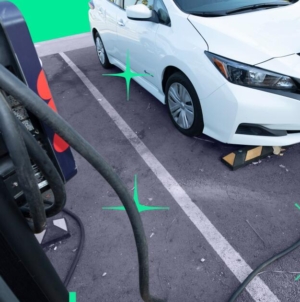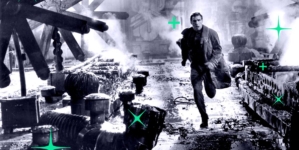-
Commentary: The state sets lofty goals in the name of a brighter future. What’s a vision and what’s a hallucination? - 24 mins ago
-
NFL Preseason Betting Odds, Picks For Dolphins-Bears, Saints-Chargers - 31 mins ago
-
Which 10 Players Have The Most Single-Game Rushing Yards in FBS History? - 40 mins ago
-
How might you reconfigure L.A. so it’s a sustainable home for everyone? - about 1 hour ago
-
DraftKings Promo Code: Get $200 Bonus For Sunday MLB, NFL Preseason Games - about 1 hour ago
-
Jaguars’ Cam Little Makes Unofficial NFL Record 70-Yard Field Goal vs. Steelers - about 1 hour ago
-
Hollywood takes a wrecking ball to Los Angeles - 2 hours ago
-
Mets Legend Named Option for Yankees to Replace Aaron Boone - 2 hours ago
-
Netanyahu says starvation claims in Gaza are exaggerated as backlash mounts over plans for new Israeli offensive - 2 hours ago
-
Fires and floods have plagued L.A. forever; brilliant marketing lured millions of newcomers anyway - 2 hours ago
‘The safest place to be’: When fleeing fire is no longer an option
Haylie Ross awoke to yelling and someone pounding on her dorm room door.
It was her resident assistant, telling her to grab what she needed and get to the library. A fire had erupted near Pepperdine in the middle of the night.
Outside, there were chilling winds, helicopters roaring overhead, smoke everywhere and a glowing red sky.
Without time to evacuate, university officials instructed her and hundreds of other students to hunker down on campus. As Ross received a stream of texts urging her to evacuate, school administrators, calm and collected, repeated the same phrase: “This is the safest place to be.”
For many, the idea of hunkering down in a fire shelter for hours on end as flames enclose on all sides is hard to stomach.
But fires in California explode faster than ever due to a warming climate, flammable brush overtaking native species and more human-caused ignitions during high winds. Fires overtaking, in mere minutes, communities that take hours to evacuate are prompting a growing number of wildfire safety and emergency response experts to argue that fire refuge policies like Pepperdine’s may be the only way to keep everyone in a vicious fire’s path alive.
Fire researchers from the National Institute of Standards and Technology — a federal science lab tasked with developing science-based standards, including for fire safety — visited Paradise in Northern California 11 times after the 2018 Camp fire and interviewed more than 150 first responders, local officials and residents.
They found 31 examples of civilians finding refuge in parking lots, intersections, buildings and even creeks as a last resort. In many cases, these temporary refuge areas were formed under the direction of first responders. In total, they protected more than 1,200 civilians during the first 24 hours of the fire.
Smoke from the Franklin fire creates a colorful sunrise in Malibu, Calif., on Dec. 10, 2024.
(Myung J. Chun/Los Angeles Times)
So, in an NIST report published in March, Eric Link and Alexander Maranghides, two NIST fire protection engineers, argue that emergency planners need to face the reality that in these dire evacuation scenarios, they have no choice but to use fire refuges — which means fire experts ought to develop standards for them that are designed to keep people alive.
They proposed three types of fire refuges within high-risk communities:
- Temporary fire refuge areas — parking lots, sports fields or open spaces with good brush clearance — would provide residents with some short-term protection in the worst scenarios but are still not truly safe.
- Larger outdoor safety zones, such as a large community park with significant brush clearance, would offer enough distance from flammable material that, while smoke and embers would make sheltering in them unhealthful and uncomfortable, residents could safely wait out a fire in them.
- Community fire shelters — buildings that would be designed to not only withstand flames but also provide residents with clean air, water and food throughout a firestorm.
But Link warns that no standards for the civilian use of fire shelters, safety zones or refuge areas exist yet, due mostly to a lack of research.
“Where building codes stand now, we’re not able to accommodate or even adapt buildings to be fire shelters in the sense that they can withstand the exposures that they need to, either from flames or from embers,” he said.
In a warehouse on NIST’s campus in Maryland, with a massive fume hood powered by industrial fans and a fire department on standby, scientists hope to put model fire shelters to the test. It’s here, at the National Fire Research Laboratory, where scientists intentionally ignite full-sized buildings, decked out with sensors, to study how (and if) they burn.
To deem a building worthy of “fire shelter” status, it must resist all of fire’s assaults: Its searing radiant heat that extends far beyond the flames, the falling embers capable of sneaking into any cracks to ignite whatever is inside, and the flames themselves.
As NIST and other groups accumulate evidence, it’s up to the scientific community to determine when the research is conclusive and create official standards through organizations such as the National Fire Protection Assn.
But extreme wildfires do not wait for studies, scientific consensus and new official standards.

Smoke from the Gifford fire filters sunlight over the burned hills near the Cuyama Highway in Los Padres National Forest.
(Robert Gauthier / Los Angeles Times)
One research group looking at satellite data found that wildfires in California are now growing in size four times faster than they were at the start of the century. Meanwhile, the California Department of Forestry and Fire Protection has identified more than 2,200 communities in high fire-risk areas with at least 30 residences and only a single escape route.
So, emergency planners have had to improvise. Without comprehensive guidelines on fire shelters, hospitals, senior living facilities and schools such as Pepperdine have struck deals with their local fire departments: The organizations house people in fire-resistant buildings. The firefighters ensure the fire doesn’t get close and intense enough to put that resistance to the test.
The senior director of Pepperdine’s Office of Emergency Services and Office of Insurance and Risk, Jon Weber, said that it’s impossible to guarantee safety with 100% certainty in any scenario, but that the university has gone to exacting lengths to make sheltering at their Malibu campus the safest option for students.
Pepperdine’s designated shelters on campus are built with fire-resistant materials including stucco, ceramic tiles and glass. Buildings are clustered to prevent fire spread. The university clears all brush within 200 feet of buildings annually — sometimes even more frequently. It has two fire engines, two fire captains and about a dozen public safety officers trained in wildland firefighting.
The Los Angeles County Fire Department routinely reviews the university’s plans.
The night of Dec. 9, 2024 — while Ross was finishing up a final — Weber headed back home to Westlake Village after a staff Christmas party. Then, right before going to bed, he heard word of a new fire developing in Malibu. Weber began monitoring the situation and coordinating his team.
The Franklin fire would go on to scorch over 4,000 acres of the Santa Monica Mountains over the course of a week and destroy 20 structures.
When the weather changed and the fire began rapidly pushing toward campus, Weber’s team ordered the shelter-in-place. Alerts went to students through texts, emails and social media. Resident assistants woke up students and shuffled them into the library and cafeteria.
Ross waited in the cramped library with hundreds of other students, faculty and their kids, and even a few animals. School officials doled out N95 masks as the winds whipped ash into the building.
Around 2 a.m., Ross looked up from a phone call with her mother to watch the hillside just feet away from the library erupt into flames. Students pulled out their phones to record. In one video, a loud but gentle voice called out: “Please move inward as promptly and calmly as possible, please.”
School officials continued to repeat that the library was the safest place to be. RAs attempted to put on a calm front and reassure their residents, but a few close to Ross confessed they were just as scared.
Weber said that based on his 20 years of work as a safety official at Pepperdine, he was confident that shelter-in-place was the safest approach.
“There’s a difference between being afraid and actually being in danger,” he said. “With the fires, absolutely, we had students that perceived they were in danger. The reality was they were in the safest place they could possibly be.”

An Orange County fire helicopter lifts off with a load of water from a pond at Pepperdine University while fighting the Franklin fire in Malibu on Dec. 10, 2024.
(Myung J. Chun/Los Angeles Times)
“If I had to evacuate my house in Westlake … Pepperdine would be at the top of my list,” he added. “I would bring my wife and my kids and my dog here and I wouldn’t have any second thoughts about doing that. I’d do it in a heartbeat.”
Pepperdine officially adopted its shelter-in-place policy four decades ago after a 1985 fire burned within 100 feet of the campus. The protocol got its first real test in the 1993 Old Topanga fire, and subsequently in the Malibu-Calabasas fire in 1996, the Canyon and Corral fires in 2007 and Woolsey in 2018.
Through all those fires, Pepperdine did not have a single death or injury. The 2024 Franklin fire was no different.
Around 8 a.m., the university lifted its shelter-in-place protocol. Ross, like the rest of those who were sheltering, walked out unscathed — though her boyfriend was quick to note she smelled as if she had just smoked 10 cigarettes.

Family member of a resident looks over devastation of a home burned on Mariposa de Oro Street in Malibu, on the first night of the Franklin fire, Dec. 11, 2024.
(Brian van der Brug / Los Angeles Times)
California has pushed to exclude fire-prone areas from laws designed to fast-track development amid the nation’s housing crisis, and many local governments have made it their official policy to avoid adding any density to fire-prone, hard-to-evacuate areas.
Yet for the many communities in the state’s fire-stricken wildlands — from the foothills of the Sierra to Malibu’s coastal canyons — building new fire shelters may be essential to survival.
Source link































